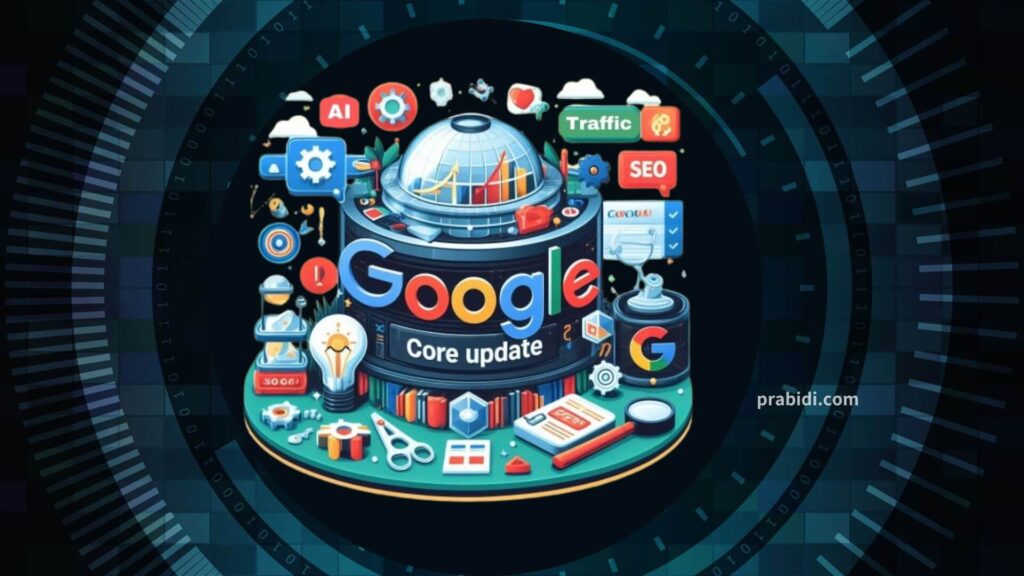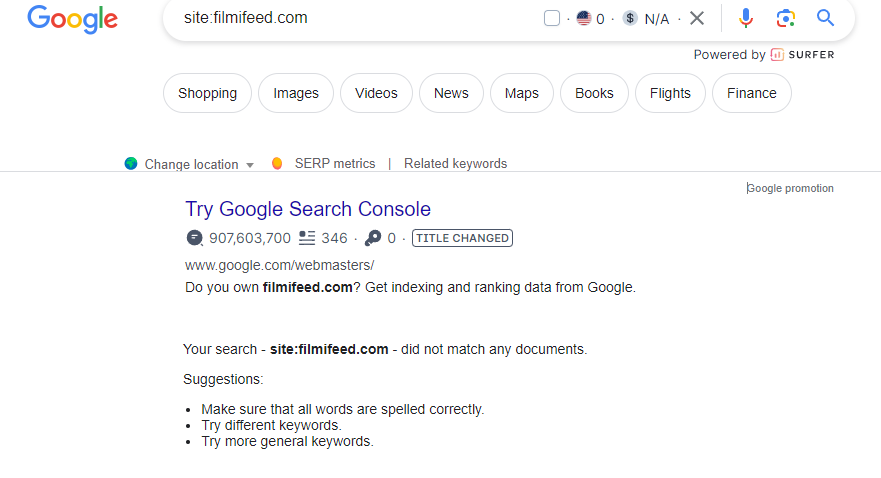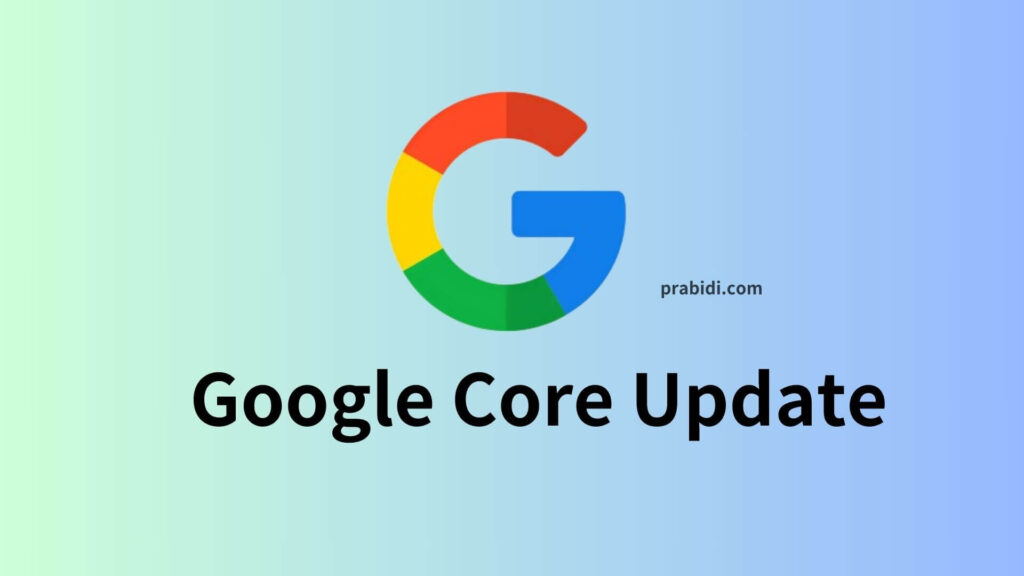How to Recover From Google Core Update? Everyone is searching for the answer to the question. The recent Google Core update was held on 5 March 2024. Most websites are affected by the update.
Google Core Update is a big change in Google’s search engine algorithms, providing users with correct, relevant, high-quality content. In this post, I explain the steps you can take to recover from a traffic drop to your website caused by a Google Core update.
What is a Google Core Update?
A Google core update is when Google changes its search engine algorithm and systems in a big way.
These updates aim to make searching better for users by giving them more relevant, useful, and reliable results. For the most part, core updates happen a few times a year, and the most update was held on 5 March 2024.
Here’s the latest Google Core update of March 2024, which has dominated discussions within the SEO community.
Multiple sites have been affected,
- Algorithms have restricted the organic reach.
- A manual action penalty has been applied to several websites.
It can take them weeks, months, or even years to recover from these setbacks, which is disappointing. On the other hand, the worst error in search engine optimization is to aim for immediate gratification.

What is the Google core update of March 2024?
Google has made substantial changes to its search algorithm, known as “core updates,” which affect the order in which pages appear on search engine results pages (SERPs). The main objective of these improvements is to prioritize more informative, helpful material that satisfies user purpose.
The most recent in a series of algorithmic adjustments by Google intended to raise the caliber and relevancy of search results is the core update from March 2024.
This time, in March 2024, Google simultaneously delivered an update for the core and spam.
It has become more difficult to identify which of the Google changes your website may have been affected by, even though this is common, as Google has previously delivered updates quickly after one another.
Google’s spam upgrades for March 2024 focus on misleading and manipulative tactics that go against the company’s webmaster rules. As of March 2024, Google has three distinct ways of combating spam. You can find the spam guidelines here.
- It reduces results to a low quality with little to no added value. This includes ineffective websites with a bad user interface that were made more for search engine optimization than for the benefit of readers.
- Using AI to produce large amounts of low-quality content to manipulate search results.
- Parasite SEO technique whereby a third party hosts poor-quality material to capitalize on the strong reputation.
How to Recover From Google Core Update (March 2024)?
You can recover from a Google core upgrade, much like the Helpful Content upgrade. However, first, we need to examine the reasons behind this. Your website probably violated one or more of Google’s content policies for it to appear in its results.
Low-quality content, buying links, or deceptive black hat techniques could all be examples of this. However, the fundamental cause of the breakdown in your connection with Google is the loss of trust.
You will need to follow these steps, just like you would in any broken relationship.
- Make the necessary corrections to the mistakes you made.
- Prove to Google that you are reliable.
- Demonstrate your want to be a long-term partner.
Initially, these are likely to be the problems you may face, but we have explained them with the solutions.
An algorithmically Deindexing Website
Because deindexing happens when a website doesn’t match specific requirements set by Google’s algorithms, it might not be regarded as a manual penalty. Google is deindexing the sites that have violated the policies of helpful content. Deindexing is known as a manual penalty by Google.

A manual penalty has been applied to your website.
This is a purposeful action on Google’s part, usually followed by an alert in Google Search Console. This notification is located under the Google Search Console manual actions tab.
We’ll look at manual and algorithmic Google penalties together because the route to core update recovery will be similar.
The following three actions can help you recover from the Google core upgrade of March 2024.
You may Like: Make $100 A Day Trading Cryptocurrency: In 3 Effective Strategies
Remove all unhelpful Content
You can’t possibly avoid the penalty by using low-quality content. Offering informative, thoroughly researched content users find valuable is the foundation of search engine ranking.
Although it isn’t new, Google reiterated this in their most recent blog post regarding the March 2024 upgrade.
Take the first step towards your website’s recovery by removing all unhelpful content.
Unhelpful content is defined as follows:
- Shallow material that doesn’t truly address the search query.
- Poor content that doesn’t address users’ searches and is solely meant to rank and get clicks.
- Large-scale content produced by AI
- Spam created by users
Examine the Search performance report within your Google Search Console to identify and remove any pages that haven’t yet generated significant traffic or ranked well for keywords in the past several months.
Think about combining well-written web pages that aim for related keywords. Next, reroute outdated sites regarding those keywords to your main page.
It’s time to stop using AI technologies abusively if you’ve been producing hundreds of pages quickly.
Instead of completely removing your pages, review and modify them using the guidelines of Google’s helpful content policies.
Additionally, remove any spam that may have been included in comments and links created by users.

Get a New Domain Instead of Buying an Expired Domain
Purchasing expiring domains has long been a popular strategy. Indeed, some services specialize in selling expired domains that you may use to bypass Google’s sandbox.
But the most recent update is taking a harsh stance on this.
You should be all right if you produce high-quality content but have bought an expired domain to get around the sandbox period. This is because Google gives attention to low-quality content.
However, you’re probably breaking the law if you’re doing one of these.
“Expired domains that are purchased and repurposed to boost the search ranking of low-quality content are now considered spam.”
Google blog update, March 2024
Remember that Google highlights content of poor quality, so if you are producing high-quality content and only bought an expired domain to circumvent the sandbox period, you should be good.
However, you’re probably breaking the law if you’re doing one of these.
- Your content is irrelevant to the previous domain, a gov or edu site.
- You abuse the site’s power to promote inferior content.
This is a serious measure that will only be taken in case you break these rules.
If so, you should get a new domain.
Since you’ll still be abusing the site’s ranking authority for the new domain, a 301 permanent redirect might even be more harmful.
Top 7 Keyword Research Extensions for Chrome for Bloggers
Avoid Black-Hat SEO Tactics
I want to remind you that it is 2024 and not to continue using black-hat SEO.
The core update penalizes the following techniques.
Cloaking: Manipulating search engine rankings can lead to penalties for the guilty website when you show different material to search engine crawlers than visitors.
Redirects: By giving users content that differs from what their crawlers have found, clever redirects trick search engines and compromise the accuracy of search results.
Parasite SEO: While not strictly a black hat technique, using trustworthy websites to house inferior information is considered spam.
Remove invalid links
Links from irrelevant, low-authority websites—often link factories and PBNs—are considered unnatural.
Your website probably obtained them through a paid agreement or partnership. Or your website was spammed by a rival.
Take these actions to unfollow spammy links even though this isn’t a link spam update:
- Navigate to the Top connecting sites tab inside the Global Search Console Links report.
- Export the list and disavow any links that seem suspicious.
After cleaning up your link profile, send in a request for review.
If links to other websites have been sold from your pages,
- Remove these links or give them the rel=”nofollow” attribute.
- Ask for a review.
Recovering from a core update: how long does it take?
Google releases core upgrades every few months. If one of these changes affects your content, it might not return to its original state until the following major core update, assuming you’ve fixed the issues.
Conclusion
In conclusion, to recover your website from the Google Core update and avoid being penalized by Google, sincerely follow E-E-A-T guidelines and create high-quality, relevant, and thoroughly researched content. This will help users find relevant queries they are searching for.
